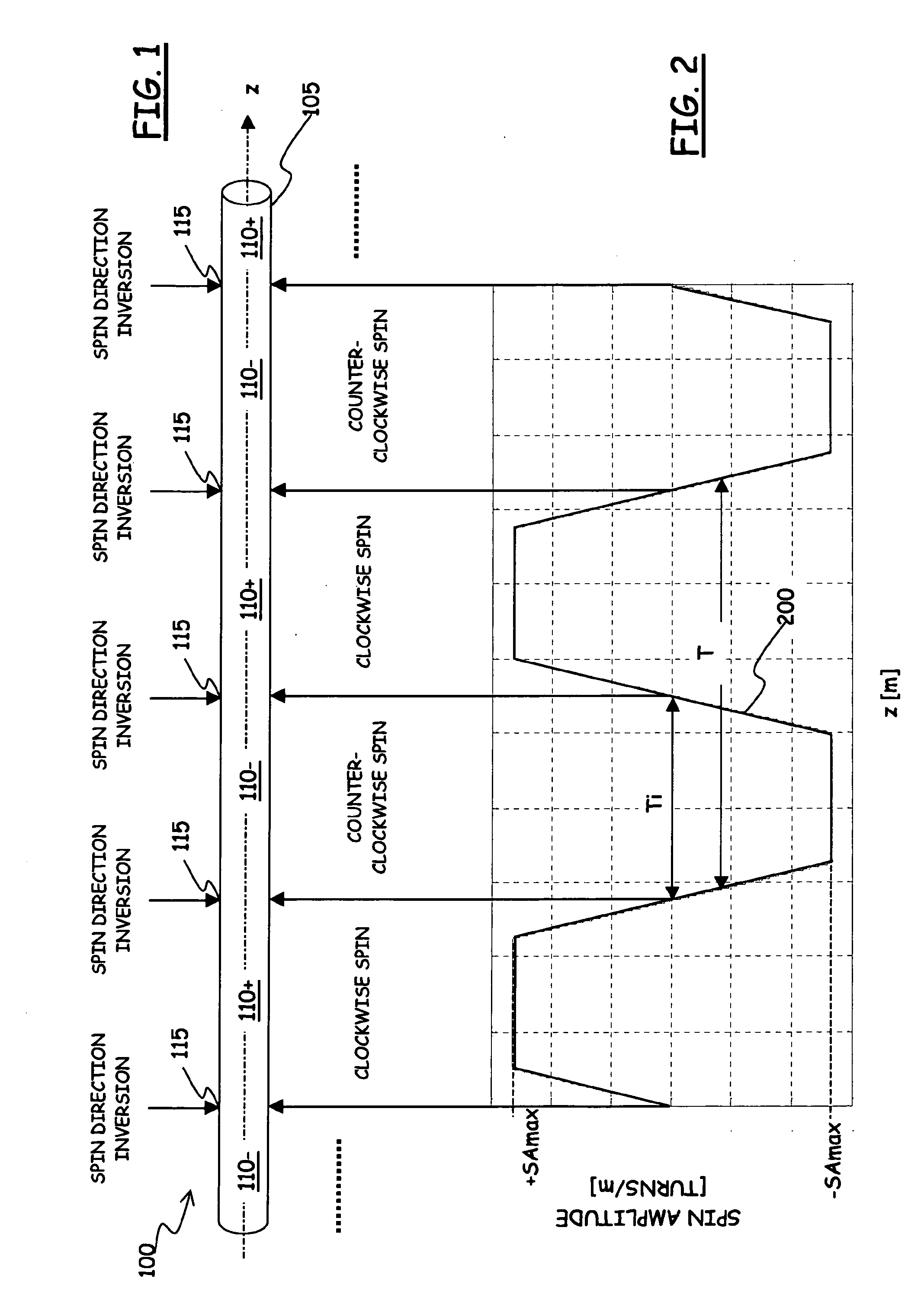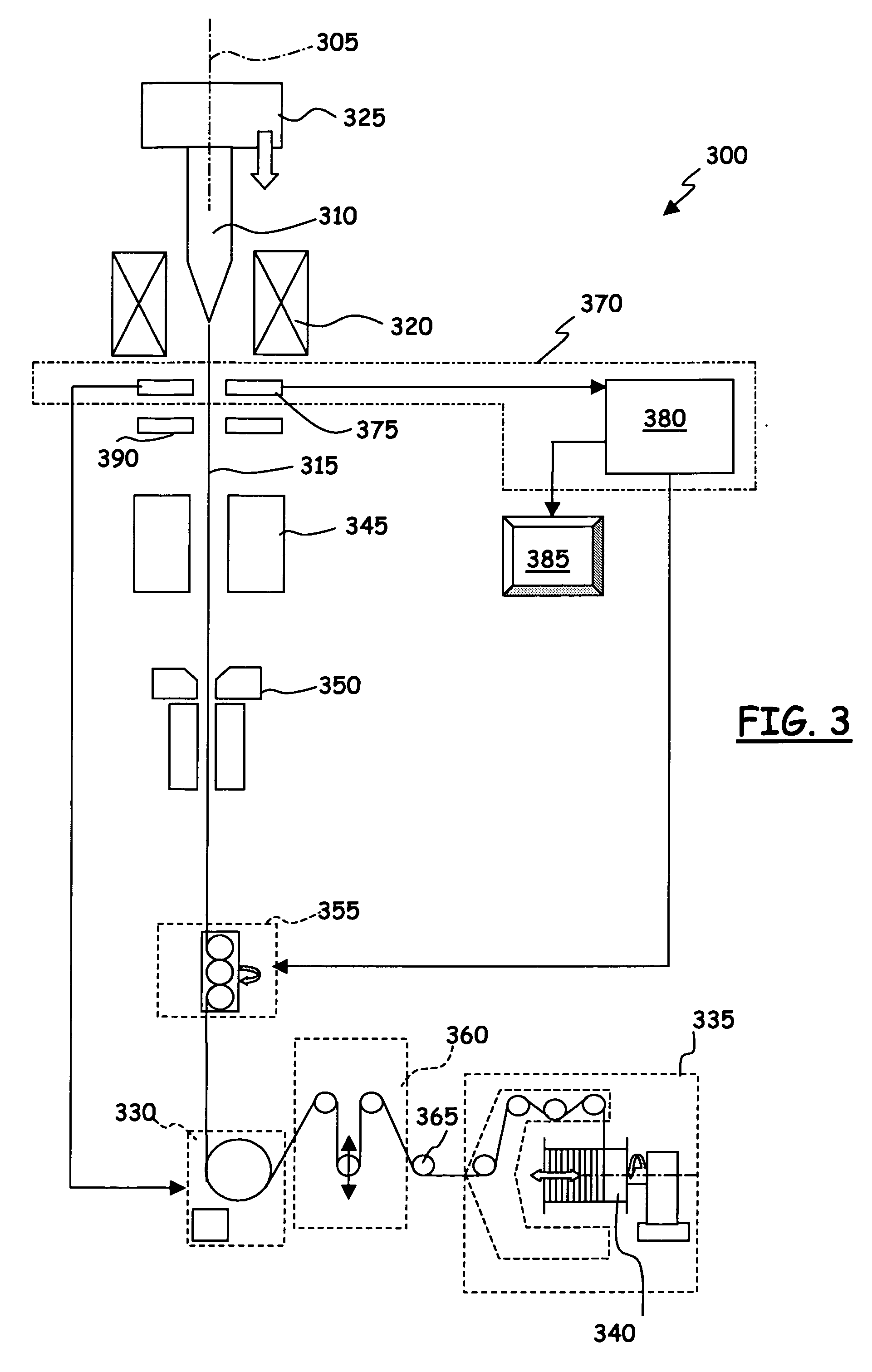Method of making a low PMD optical fiber
a low-pmd, optical fiber technology, applied in the field of optical fibers, can solve the problems of pulse spreading, birefringence normally detrimental to the optical fiber performance, and disruption of the cylindrical symmetry of the fiber core, so as to reduce the birefringence, increase the fiber beat length, and reduce the effect of birefringen
- Summary
- Abstract
- Description
- Claims
- Application Information
AI Technical Summary
Benefits of technology
Problems solved by technology
Method used
Image
Examples
Embodiment Construction
[0051]With reference to the drawings, in FIG. 1 a short section 100 of a spun optical fiber 105 is schematically shown. In particular, the fiber 105 is an alternately-spun fiber, with an alternate and, more specifically, substantially sinusoidal spin profile, in the example a trapezoidal spin profile 200, schematically depicted in FIG. 2. The spin profile 200, expressed in terms of spin amplitude (or spin rate), in turns per meter, as a function of the fiber length, taken along the z axis, in meters, is intended to represent the spin actually frozen-in in the fiber (as discussed in the following, the frozen-in spin does not coincide with the applied spin that is imparted to the fiber by a properly controlled spinning device during the fiber drawing process).
[0052]Optical fiber sub-sections 110+ and 110− are defined wherein the fiber 105 is spun, e.g., clockwise and counter-clockwise, respectively, the sub-sections 110+ and 110− being alternated to one another along the fiber axis z....
PUM
| Property | Measurement | Unit |
|---|---|---|
| beat length | aaaaa | aaaaa |
| beat length | aaaaa | aaaaa |
| beat length | aaaaa | aaaaa |
Abstract
Description
Claims
Application Information
 Login to View More
Login to View More - R&D
- Intellectual Property
- Life Sciences
- Materials
- Tech Scout
- Unparalleled Data Quality
- Higher Quality Content
- 60% Fewer Hallucinations
Browse by: Latest US Patents, China's latest patents, Technical Efficacy Thesaurus, Application Domain, Technology Topic, Popular Technical Reports.
© 2025 PatSnap. All rights reserved.Legal|Privacy policy|Modern Slavery Act Transparency Statement|Sitemap|About US| Contact US: help@patsnap.com



